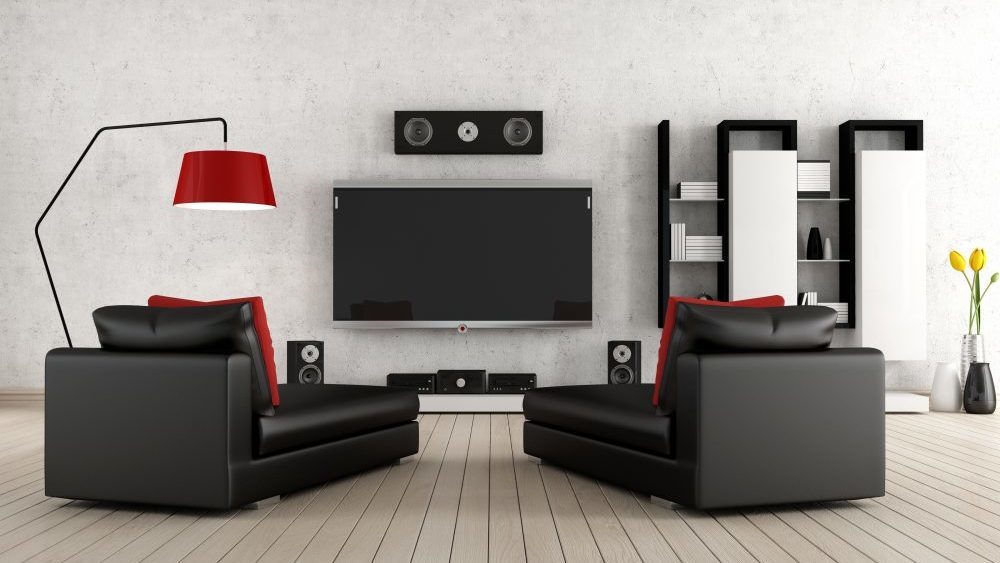
While the latest in home theater systems features wireless technology, plenty of audiophiles still want to wire their homes for sound and video, enjoying the pure fidelity delivered over home-designed networks. Listen up for the pros and cons on wireless versus wired technology.
Know your number. Often you will see a home surround sound system designated with numbers such as 5.1 or 7.1. These designate the number of speaker channels of the system. For example, the 7.1 system would represent an eight channel system: seven speakers surrounding the listener and a subwoofer represented by 0.1 in the number.
Speaker placement. Assuming that a big HDTV is the central focal point, with seating on a sofa directly in front, typically there will be a speaker on each side of the TV and a center speaker right in front. Next would be speakers on each side of the sofa. Finally, two rear speakers would be located behind the listeners, at diagonal angles from the back corners of the sofa. That leaves placement of the subwoofer, transmitting sounds in the lowest frequency range. Most people place it on the floor somewhere in front or just slightly to the side of the television. In a 5.1 system the rear speakers would be omitted.
The brains of it all. The master control for the home theater system is the receiver that sits in proximity to the television. It is connected to the outside cable source for the internet. The TV is connected to the receiver via a High Definition Multimedia Interface cable, or HDMI. Other ancillary devices such as DVD players or Apple TV receivers also tie in.
The receiver distributes all the data inputted to it out to the transmitting devices: the picture to the TV and sound to the speaker system arranged throughout the room. Thus the receiver is the master control for the entire set up. Operation of the receiver can be handled through an iPhone or Android app.
To wire or not to wire. Before beginning a wiring project for your home audio, it’s worth considering that technology has made it optional. Wireless speakers receiving signals transmitted from a router, connected to the receiver, can do the job effectively. Nevertheless, there are trade-offs.
Supporters of wiring contend that wireless systems sacrifice some amount of signal fidelity and thus sound quality. With wired systems, as long as you have the proper gauge speaker wire, you should have low impedance (loss) of signal to the speakers. The lower the gauge number (16, 12, etc.), the thicker the wire, with less signal impedance over distance traveled, resulting in faithful sound quality.
If you wish to have a whole house system rather than just within the home theater room, wired is best because the signal can transmit optimally through wire to points distant from the receiver.
Wireless advocates cite the flexibility of being able to make easy changes to speaker placement. You also don’t have the hassle and work of drilling holes in walls and ceilings. Rapidly advancing technology is making wireless transmission of data better all the time.
Installation. Running speaker wire and other cables is easiest when a house is being built before walls and ceilings are finished. Installing them afterward is a much bigger project. If you are skilled at both the technical side of audio-visual design as well as the light construction duties of putting holes in walls and pulling wires, you can do it yourself. Some wires can be hidden behind crown or floor molding.
Otherwise, it pays to hire a professional home entertainment company. Not only will they do that work, but they will expertly design a system tailored to your space.



Leave a Reply